Sash Windows, a Case for Maintenance
Sash windows are found in buildings all over Scotland, from the grandest mansion to the smallest cottage. Many sash and case windows in Scotland are in their second, and sometimes third century.
They are used in buildings as diverse as country houses, workers cottages, hospitals, industrial buildings and offices.
This article is focused on what is really the most common type of traditional historic window - the double hung, vertically sliding, sash and case window.
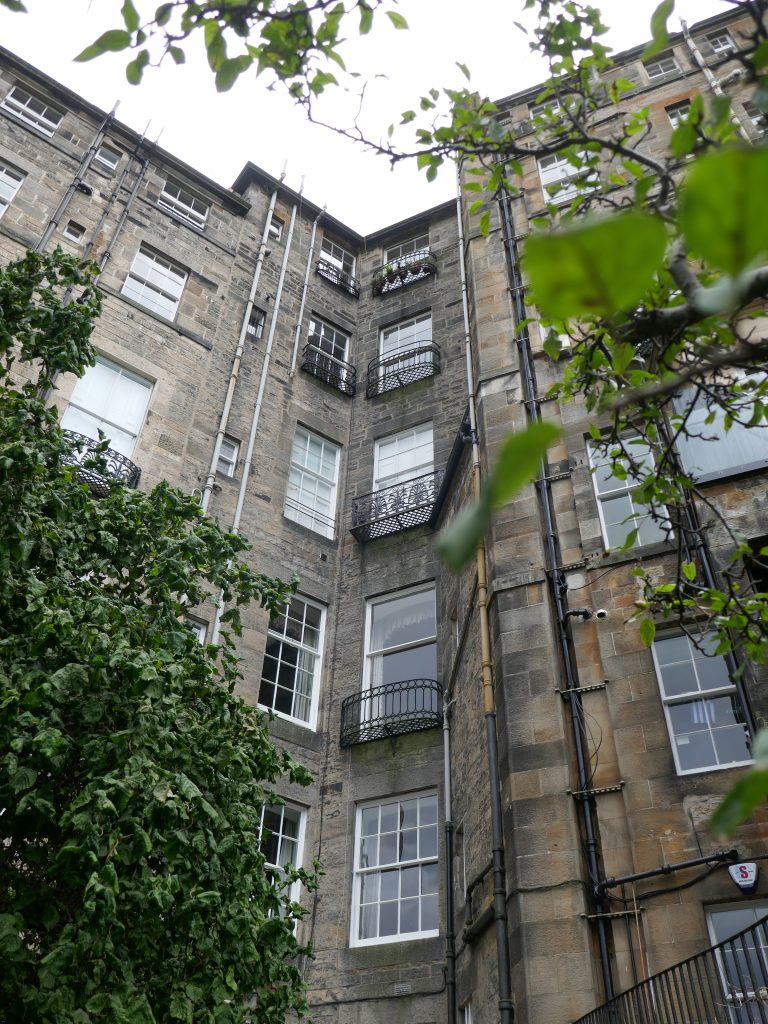
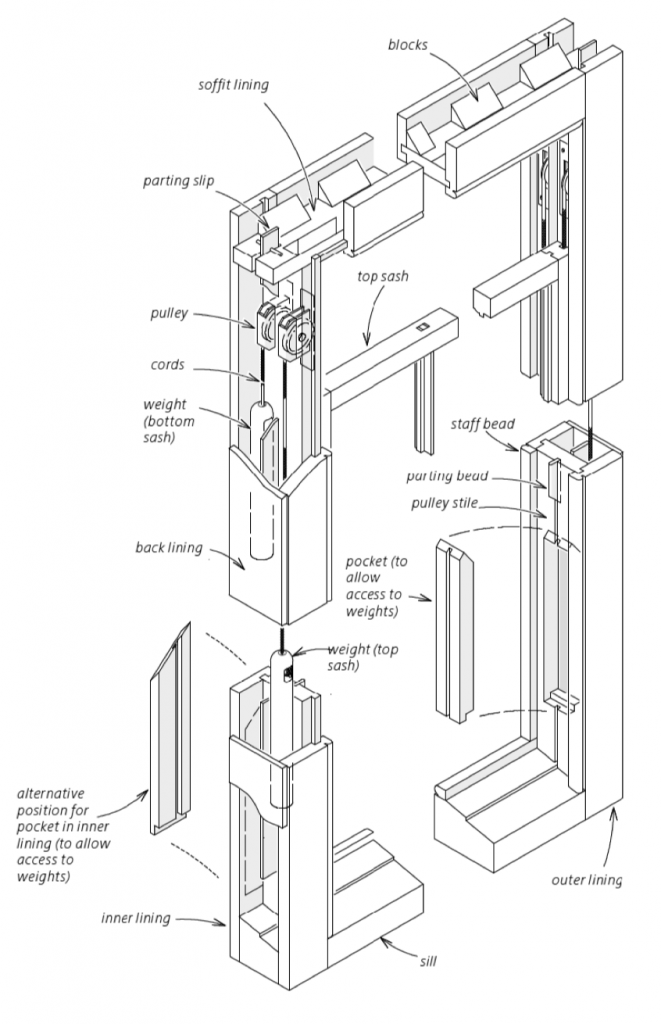
A vertically sliding sash and case window consists of 2 ‘sashes’ fitted into a ‘case’. The sashes are normally timber frames around a sheet of glass, which move up and down within a frame (the case) allowing simple ventilation. It is a tried and tested design, used and refined through the centuries and continues to be used today.
They are adaptable, simple to make and maintain, good at protecting from Scottish weather while also providing adjustable ventilation, and when they are open they don’t encroach into the interior or exterior space.
They are operated by ropes, or when the windows are large and sashes are too heavy this will be replaced with chain. One end of the rope is fixed to the sash, it is then taken over the pulley and has a weight on the other end to counterbalance the sash, making it very efficient to operate. All you have to do is provide force to overcome the friction of the sash within the case, and the sash will slide up or down within the case, perfectly balanced.
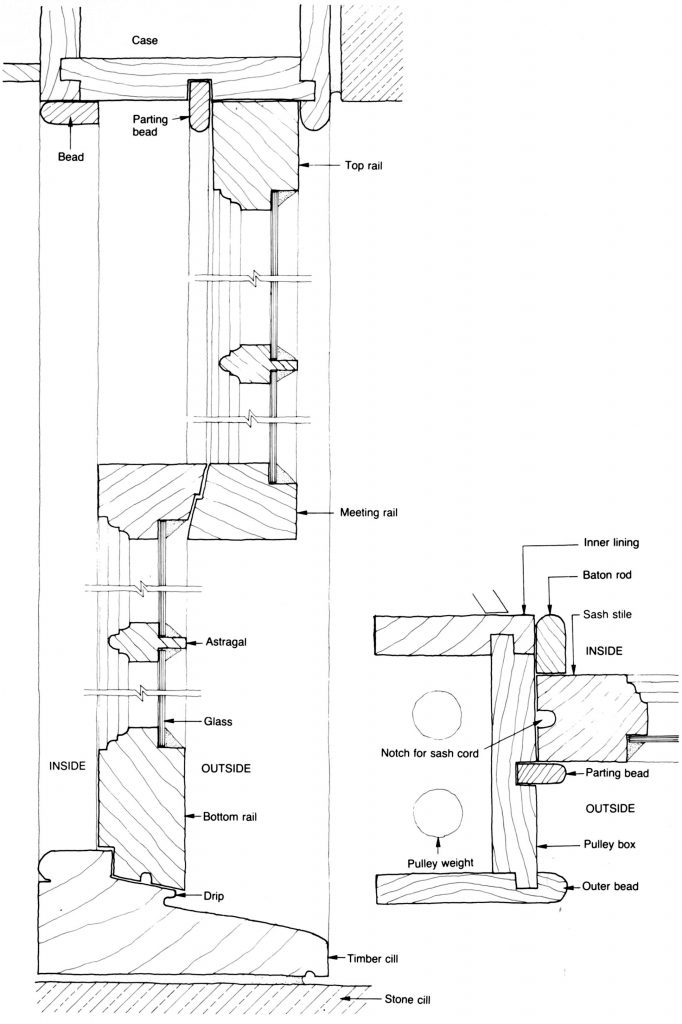
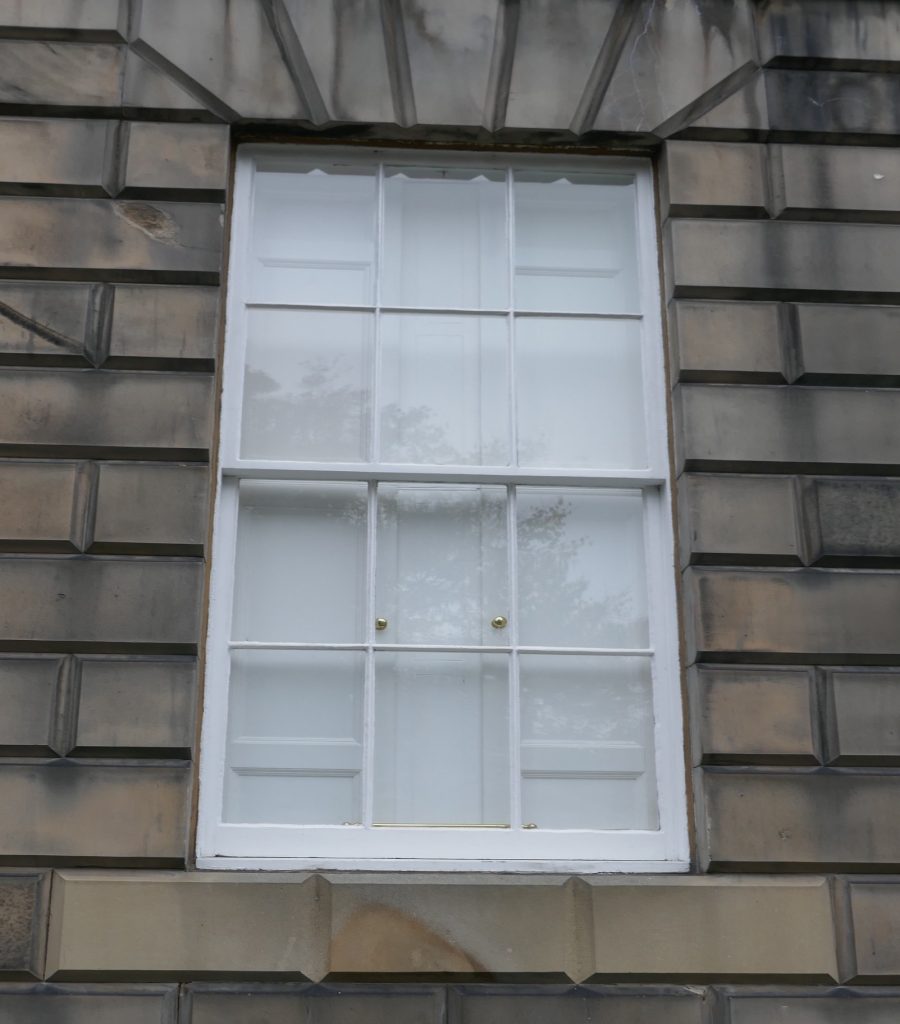
With the need for efficient ventilation to buildings coming to the forefront, sash and case windows may start to play a bigger part in building design than they have done in recent years. They are extremely good at providing varied levels of ventilations from a trickle to a large volumes in an efficient manner.
With the upper sash pulled down, and the lower sash pulled up, the stale air from the room is removed at high level and new air comes in at the bottom. Due to the sashes moving independently this is highly adjustable to provide whatever ventilation is required at the time, for example a complete air change can be easily facilitated. Trickle ventilation, as required under building regulations, is also possible and often more effective and controllable than installed proprietary trickle vents. Some installed vents, especially the more discreet designs, can divert air to behind the pockets in the case and therefore make the ventilation less controllable allowing discomfort from draughts.

Sash and case windows, especially in historic buildings, have a considerable effect on the building’s character. There are too many examples of sash and case widows being replaced with alternatives, only to find the beauty and character of the facade and interior is lost. This character loss can even be experienced when glass is simply replaced with a different glazing arrangement to the original. This makes a good case for maintaining the windows as they were originally fitted, both visually and in their construction. Another advantage of maintaining sash and case windows over replacing them, is the simplicity of the maintenance. Parts are easy to source and the craft of maintaining these windows has been around for over 2 centuries. One of the great advantages is that the whole window does not need to be replaced if parts fail, and many of the maintenance tasks required can be undertaken by a local joiner. Additionally all sub-parts can be mended and replaced while the window is in place, reducing disruption and cost to residents. Repairs can be done using easily sourced parts, when they are required. Tradespeople with experience will be able to assess what repairs the windows might need, suggesting how to do the most appropriate repair, and will only encourage replacement when absolutely necessary. Well maintained sash and case windows will last for decades, even centuries.
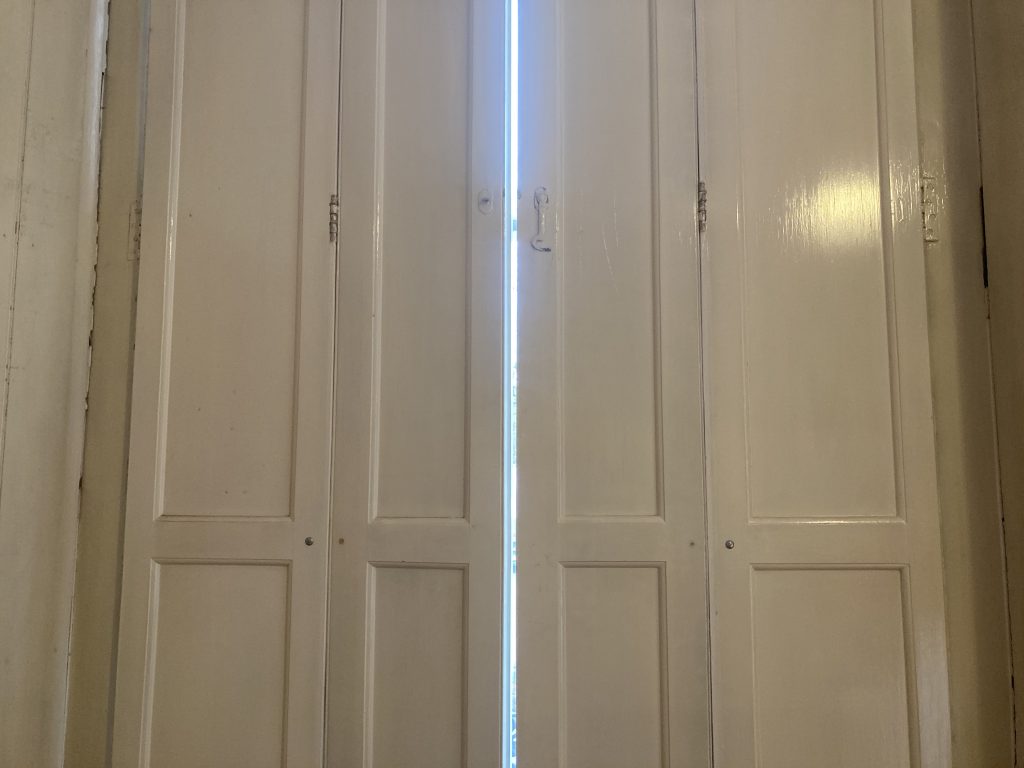
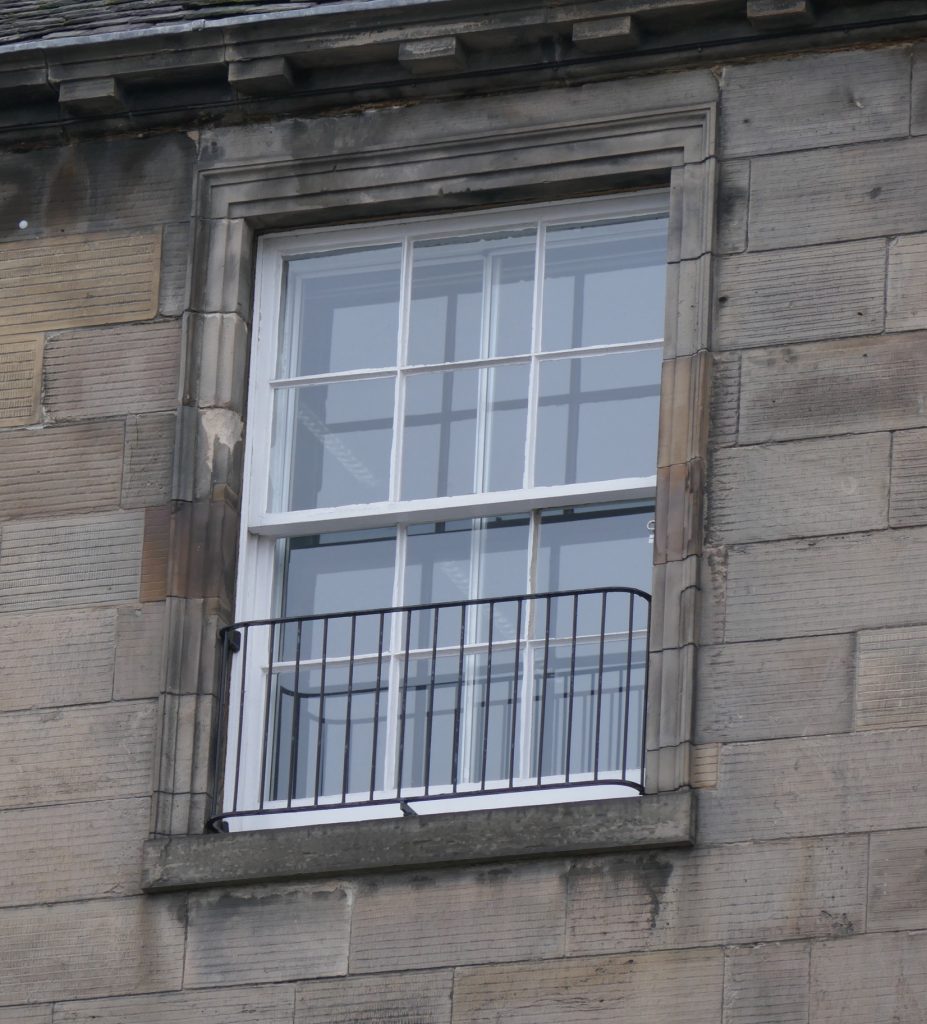
Thermal performance is another consideration when assessing the maintenance of sash and case windows and there are various ways that the thermal performance of existing windows can be improved. Shutters which fit well are effective for reducing heatloss and sound infiltration. New ones can be installed, however if the original shutters are still present these can be made useable again. The addition of curtain and blinds will further reduce heatloss.
Shutters have often been an integral part of the design and contribute to the character of the interior. When shutters are present they are worth restoring, for heat loss prevention, sound insulation and for the look and feel of the internal environment. Shutters which have been painted shut can be reopened. Due to the great increase in thermal performance of the windows it is worth exploring ways to have working shutters. Combining these with blinds will add to the thermal performance. Heavy curtains can add another layer of heat loss prevention, but remember to hang the in a way that the shutters may still be used.
Secondary glazing can be added to the interior, in behind the window. Add this to a window with blinds and shutters to reduce heat loss by up to 75% Secondary glazing will also reduce noise coming into the building from outside, adds another layer of protection to the indoor environment and can be removed in the summer. It is also beneficial in that the original windows can be retained and do not have to be taken apart for new glazing to be installed, therefore this is less disruptive than installing new double glazing. It can also be lower cost.
Double glazing can be fitted into the original frame, although it is important to note that the panels will weigh more and so the counterbalance weights will have to be increased. Also the double glazed sash may require a deeper glazing rebate than the original. If it does this will have an effect on the width of the glazing astragals. Slim profile double glazing can overcome the issue of depth and may often be fixed into an original sash, but it should be noted that these will have poorer thermal performance. They will however be better than single glazing. It is important to note that as a thermal improvement measure new double glazing is actually not as cost effective as repairing the original assembly or installing blinds and shutters. This adds to the case for maintaining the windows as they are - reducing heat loss with additional measures that do not affect the window itself, often the more cost effective approach. Sash and case windows have been used across Scotland for over 2 centuries. Their ability to control indoor climate, and their ease of use and repair has made them unmatched by other forms of windows. They continue to be a desirable solution and so are worth repairing, replacing and indeed incorporating into new building designs.
